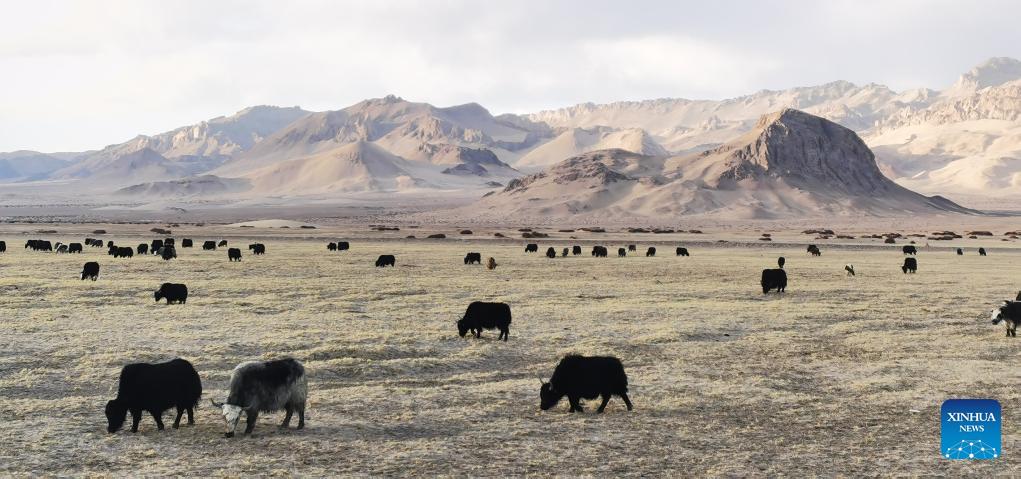Ancient Tibetans crossbreed yak, cattle 2,500 years ago: study
 0 Comment(s)
0 Comment(s) Print
Print E-mail Xinhua, December 18, 2023
E-mail Xinhua, December 18, 2023

This cellphone photo taken on April 16, 2022 shows cattle in southwest China's Xizang Autonomous Region. A new archaeological study has shown that inhabitants of the southern Qinghai-Tibet Plateau engaged in crossbreeding of yak and cattle in the high-altitude region at least 2,500 years ago. (Xinhua/Shen Hongbing)
CHENGDU, Dec. 15 (Xinhua) -- A new archaeological study has shown that inhabitants of the southern Qinghai-Tibet Plateau engaged in crossbreeding of yak and cattle in the high-altitude region at least 2,500 years ago.
This practice of crossbreeding domestic yak with cattle is known to produce hybrids that combine yaks' endurance in harsh environments with the meat and milk-producing capabilities of cattle.
Researchers from Sichuan University, Northwest A&F University and Washington University in St. Louis collected and analyzed the remains of 193 yaks, cattle, and their hybrids obtained from excavations at the Bangga site in Shannan, dating back between around 2,700 and 2,350 years ago.
Archaeologists have unearthed the remains of more than 10,000 mammals, dating back to the period between 3,000 and 2,200 years ago, from the Bangga site. Bangga is a large-scale and complex prehistoric stone building compound located about 3,750 meters above sea level.
Genetic studies revealed that the cattle in the Bangga site had about 12 to 20 percent genetic similarity with domestic yak, while the ancestry of yaks now living on the Qinghai-Tibet Plateau is influenced by ancient cattle.
The genetic exchange indicates that ancient Tibetans had already exploited the advantages of yak-cattle hybridization at that time, according to the study published on Thursday in the journal Science Advances.
Also, the cattle DNA from Bangga resembled that of older, lower-altitude taurine cattle from northwestern China, suggesting that taurine cattle were likely brought to the Bangga region from northwestern China, according to the researchers.
The livestock production, as well as the cultivation of barley and wheat at the Bangga site, indicate that a diversified lifestyle integrating agriculture with animal husbandry in the southern Qinghai-Tibet Plateau had taken shape about 3,000 to 2,000 years ago, according to the study. ■

This cellphone photo taken on April 8, 2022 shows yaks by the Banggong Co in Rutog County, southwest China's Xizang Autonomous Region. A new archaeological study has shown that inhabitants of the southern Qinghai-Tibet Plateau engaged in crossbreeding of yak and cattle in the high-altitude region at least 2,500 years ago. (Xinhua/Shen Hongbing)

This cellphone photo taken on April 10, 2022 shows yaks in Ngari Prefecture, southwest China's Xizang Autonomous Region. A new archaeological study has shown that inhabitants of the southern Qinghai-Tibet Plateau engaged in crossbreeding of yak and cattle in the high-altitude region at least 2,500 years ago. (Xinhua/Shen Hongbing)


